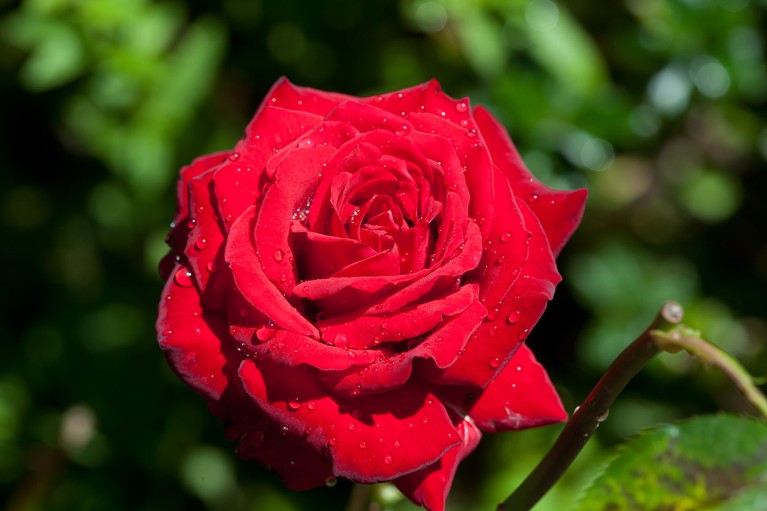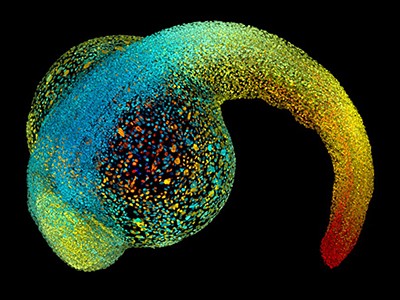
As rose petals grow, they curl outwards and form pointed corners. The pattern is related to extrinsic, rather than intrinsic, geometry.Credit: bibi57/Getty
The growth of rose petals exploits a geometric trick previously unobserved in nature, physicists have found. Using theoretical analysis, computer simulations and experiments with rubbery plastic sheets, they established that as the petals curl outwards, mechanical feedback regulates their growth, leading to the formation of rolled edges and pointed corners at their tips.
The findings, described in Science on 1 May1, could one day have applications in engineering and architecture. “You might learn new principles and then implement them in manmade structures,” says Eran Sharon, an experimental physicist at the Hebrew University of Jerusalem.
Nature’s patterns
Geometric patterns are known to affect developing organisms. But in all previously observed cases, the principles had to do with the ‘intrinsic’ geometry of surfaces. Intrinsic features are those related to the distances between points on the surface, as would be measured by an ant walking on it. But a surface of a given intrinsic geometry can have multiple ways of existing in 3D — or ‘extrinsic’ geometries. For example, a sheet of paper can be laid flat or curled up into a cylinder; and an ant walking on it would not notice any changes in the distances it covers, even though points on the sheet could be closer to or farther from each other in 3D space.
The secret forces that squeeze and pull life into shape
Deforming an intrinsically curved surface to lie flat requires stretching it, which creates stresses within the surface. In living, growing tissues, these sorts of stresses can compete with other factors. For example, a growth pattern that would tend to make a tissue curve — meaning that the curved intrinsic geometry would minimize its energy — might be ‘frustrated’ if a leaf is too thick to curve or has different layers that want to curve in opposite ways. Many examples of these tensions, called ‘incompatibilities’, can be seen in nature, where they result in stiffer tissues or create complex architectures.



